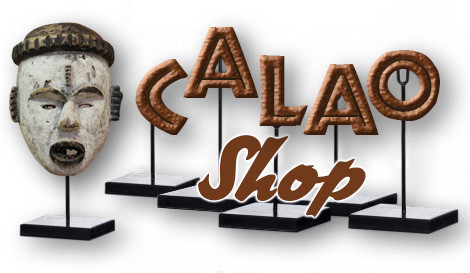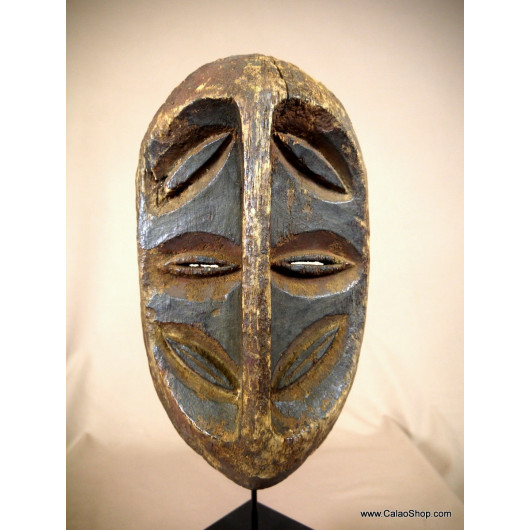Kwélé Picasso Mask
It is a mask of this type that is said to have inspired Picasso to create the "Atelier"...
-
 Secured payment
Secured payment
-
 Free shipping from 150 €
Free shipping from 150 €
-
 Guarantee "satisfied or refunded"
Guarantee "satisfied or refunded"
Very old six-eyed mask, made of wood, typical of the Kwélé ethnic group of the Republic of Congo
Height: 38 cm, width: 22 cm, age crack (see photos)
The Kwélé people
The Kwélé have long been renowned in the West for their mask art... Read more here
Negro art and cubism
"In the tradition opened since the implementation of perspective in the Renaissance, the painter gave meaning to similar images. And now forms expressing abstract structure and not identity, simplified, deformed forms, created in societies treated as primitive or savage, find themselves carrying an infinitely stronger expressiveness, more adapted to the sensations of the 20th century than the worn-out figures of academicism.
"Matisse, Derain and Picasso saw in these African objects no longer curiosities like the colonists who brought them back to Europe, but art.
"There is thus Negro art in the development of plastic signs that will ensure the rise of what is called synthetic
cubism and an aesthetic solution that led to the freedom they aspired to.
"The communication between Picasso and Negro art has thus never ceased to intervene in his creation each time he felt the need to rely on the "primitivist disturbance". In fact, it is all his properly Cubist vocabulary, his geometric reconstructions that owe something to his reflection on Negro stylization. If Picasso used means and a vocabulary borrowed from the art of black Africa, it is because he recognized their expressive power and their transcendence. He never ceased to affirm that in his eyes, this art was a learned art and not a primitive art in the vulgar sense given to this term.
"He thus contributed to aesthetic communication at the highest level between modern art and the arts of black Africa, giving them their rightful place in the development of the art of humanity.
"This is how we find the "image" of the many African objects collected by Matisse, Derain and Picasso in many of their works." (Extract from "Picasso, the man with a thousand masks", catalogue of an exhibition organised in Barcelona in 2006 under the aegis of the Barbier-Müller Museum)
For example, this Kwele mask which is said to have inspired Picasso for the creation of the Atelier, oil on canvas from 1927-1928:
The Kwélé mask with six eyes
This very old mask is perfectly in keeping with the mask described above which is said to have inspired Picasso; the wood which has dehydrated over time has become very light.
In addition, it has a "bite" on the back side which allowed the dancer to hold it in his teeth.








